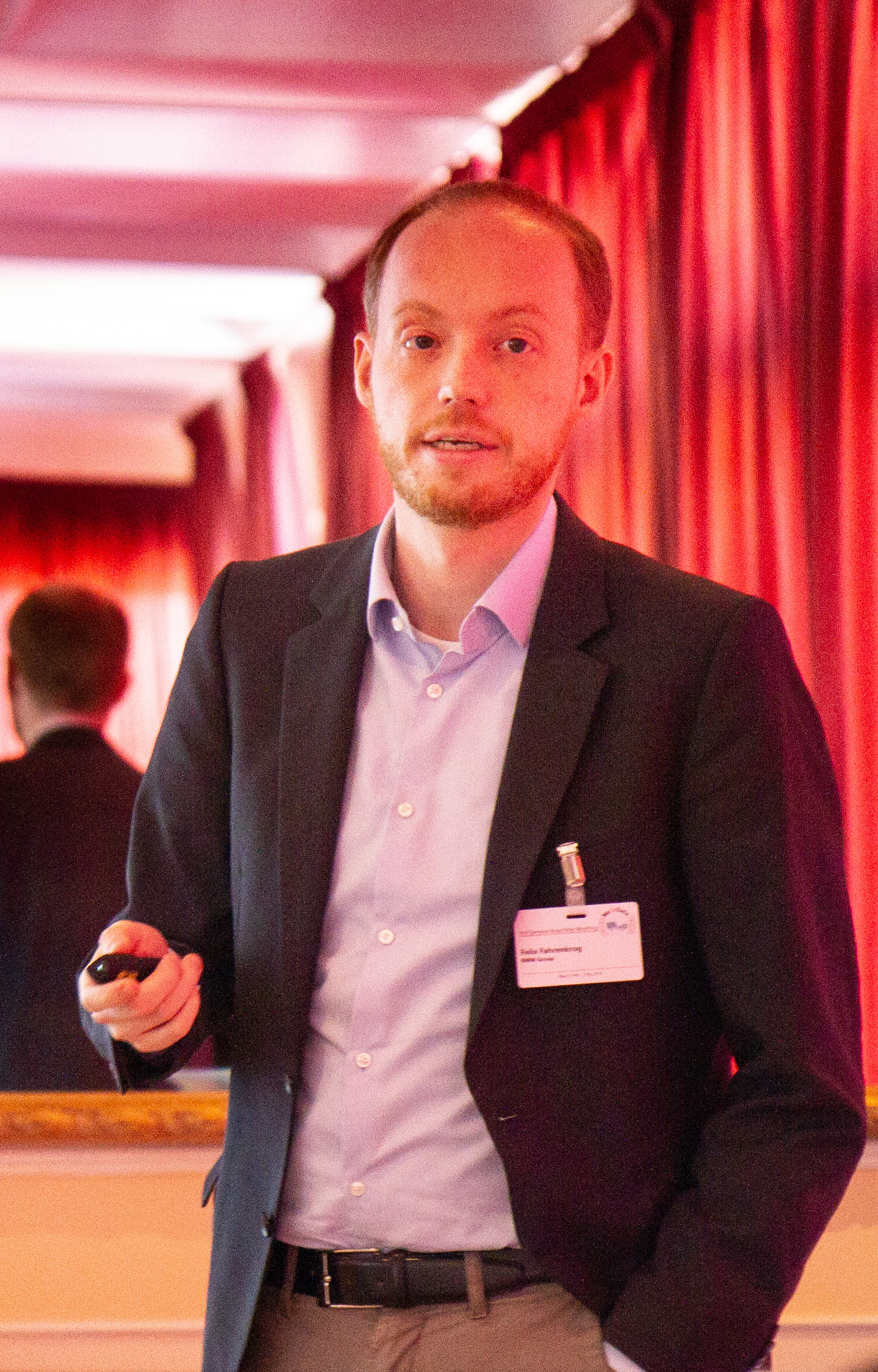Nudging simulated people for the sake of safety
A traffic nudge must be considered safe before it is put on the roads. Short tests are however not able to assess if the risk of impact may have increased, as crashes are fortunately far too uncommon in real life. Therefore, MeBeSafe applies computer power to simulate its developments.
It is true that computer simulations cannot mimic reality completely. But it has the advantage that huge amounts of dangerous scenarios can be tried with high accuracy, without the risk of anyone actually getting hurt. This is something Felix Fahrenkrog at BMW is doing for MeBeSafe. It might sound truly fascinating that reality can be modelled artificially like this, but for Felix it is just the order of the day.
“We do simulations all the time, that’s nothing new to us”, Felix Fahrenkrog says, “What’s interesting is if we can model nudges and how drivers react to them. That’s very different from what we usually do.”
To build a model, Felix first has to define the scenario, including how the road looks and how many road users are to be included. In an ideal situation, there is already some input data on the distributions of relevant parameters, such as speed. If not, that has to be measured somehow.

Hard data such as this are however not the only variables in traffic. No, there is also the far more complex matter of driver personalities. There are not two drivers completely alike. Everyone differs in terms of behaviour when it comes to risk taking, reaction time and perception. In order to simulate a real reality, this really has to be modelled as well. There are a few existing models touching upon this, but they always have to be modified to encompass the actual situation.
One traffic scenario can play out in many different ways, depending on all the surrounding factors. As the number of variants is so large, the number of simulation runs has to be even larger to get to significant results. A few simulations in MeBeSafe have actually required up to a million runs, something that would be impossible or at least take huge efforts if it was to be made in real traffic.
One example is the motorway exit scenario in that WP3 is dealing with. By using isac’s real world speed distribution for one measurement point, Felix was able to model speed distribution for the rest of the curve. Fortunately, the results from the simulations were rather similar to reality. Only one difference was buggering about.
It seems like the simulated drivers drove a bit faster at a certain part of the curve than the real drivers. How could this be? Interestingly enough, the simulated speed in the middle of the curve was very similar to how fast real people drove in a virtual car simulator for the very same curve with the nudge present. Is there some inherent aspect in simulations that is not captured?
The answer is rather simple. In reality, there is a speed limit sign right in the middle of the curve. This sign does not exist in either of the virtual studies. Naturally, it is likely that the speed limit sign will make drivers go slower at that exact position.
This is one of the aspects not taken into account when doing the simulations. As an outsider, it might seem strange not to include this. Indeed, it may be tempting to just keep on adding variables up until the simulation is as close to reality as possible. But it does not actually work that way. Each variable added to the simulation increases the number of runs needed for significance. It is simply not feasible to simulate every single grain of dust blowing over the street. And moreover, there is also a risk in introducing too many parameters.
The more detailed the model becomes, the more likely it is to induce mistakes to the concoction. Every aspect taken into consideration must be correctly modelled to contribute to the results. If not, it will make the simulation less reliable than had it been left out.
“When we did the simulations for cars approaching cyclists for WP2, we decided in our simulation that the cyclists should be completely blind and not react at all if a car was about to run into them”, Felix says.
This may appear as a morbid simplification, but there are good reasons for it. In case the cyclists were to react, it would be necessary to include different behaviour for the cyclists in the simulation as well. Not every cyclist scans the traffic in the same way, not every cyclist brakes in the same way or uses the same speed. And if that behaviour was to be included, the comparison between a baseline and the situation with a nudge also becomes much more difficult. Could a decreased number of simulated accidents in the nudge scenario actually depend on the simulated cyclists behaving differently?
The effect could perhaps be neutralised, but only for the price of even more runs. And in this scenario, it would not add any extra value, as the nudge in WP2 that should be investigated only applies to cars. It also intends to work even before the cyclists could respond.
Most of Felix’ simulations for MeBeSafe has already been done, but one challenge is left; the simulation of truck driver coaching in WP4. This is something much more complex than the previous models, as it has to include much larger timespans, more drivers and more intricate psychological modelling of the drivers’ behaviour. This is an even larger challenge than it may seem, as few input distributions are actually available due to the complexity of the topic. So, the parameters must instead be estimated in order to evaluate the potential effect of coaching.
A broad range of scenarios also make it necessary to use even more simulation effort. A large amount of exciting work and results therefore await, but for Felix Fahrenkrog, the most exciting result of all does not come from the simulations. No, it will come after the field trial has been done; when reality makes its final statement on whether the true nature of the nudges really can be captured by a computer. Or not.
